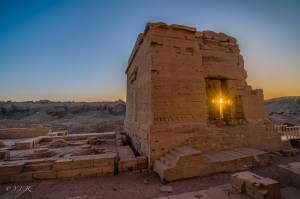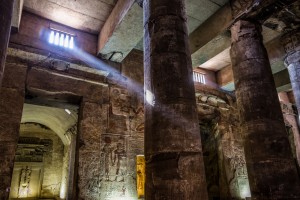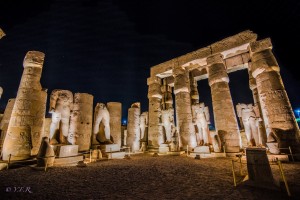Interview in La Voz del Viento (The Voice of the Wind), directed by Moises Rojas about Mata ki te Rangi, “The Eyes that Look to the Sky”.
Author: Vanya
Science & Fiction: Robots with feelings
Science and Fiction, a section of the radio program Dimension Limite, dedicated in this occasion to robots and the possibility that one day they would develop real feelings. Press the link to download the program.
Military Robots – Dimension Limite
Kom Ombo Temple

The Kom Ombo temple, built in the ptolemaic period is remarkable for being the only doble temple in Egypt, with its north side consecrated to Haroeris and the southern to the crocodile god Sobek.
Kom Ombo was a place where medicine and surgery were practiced, with such a skill that even today seems surprising. Its reliefs of medical instruments, including a stethoscope in one of the back chapels are very famed throughout the egyptological world.
If you see a bunch of cobras near the temple, don’t worry. They are quite harmless.
Denderah Temple

The Denderah temple –consecrated to the cow goddess Hathor– is one of the less frequented, in spite of its importance and its pristine state of preservation, of the whole Egypt, mainly because of being so far from the mainstream tourist tours.
It is known for the horoscope that covers the ceiling of one of its chapels and specially for being home of the famous “Denderah Lightbulb”. The latter is a bas relief in which many people see a modern light bulb, although orthodox egyptologists postulate that is the mash up of a djed pillar and a lotus flower with a snake inside of it.
Horus Temple (Edfu)

The Horus Temple in Edfu is the best preserved temple in Egypt. The actual building, raised between 237 and 57 b.C, was built on top of much older structures. Its reliefs tell us the story of its own construction, along with different legends, including the mythical struggle of Seth and Horus, who was trying to avenge his father Osiris’ death.
Many of the ceilings show the damage caused by fire; perhaps an attempt of the christians to destroy the pagan images; perhaps the remains of bonfires of the people that chose to seek refuge in the temple in ancient times.
Abydos Temple

The temple of Seti I in Abydos is one of the most magical in Egypt. Where the great egyptologist and paleographer Dorothy Eady –better known as Omm Sety– stated that she had lived in ancient times like the priestess Bentreshyt, very close to Seti himself, durin the XIX Dynasty.
It is here where we can find the famous cartouche with the superimposed name of Seti and his son, the future Rameses II, showing out some strange images, in which many people believe to see a submarine, a helicopter, a tank and other modern machines.
Saqqara and Serapeum
The immense complex at Saqqara was built by the architect, mathematician and doctor –he would be later even deified– Imhotep, under orders of the pharaoh Zoser, during the III Dynasty. Along the beautiful Stepped Pyramid –the inspiration of the upcoming egyptian pyramids– we could admire the reliefs and paintings of several tombs open to the public and –if we are lucky– explore the interior of faraoh Unas’ pyramid.
Although it may not be easy securing a permit, we recommend to visit the Serapeum, one of the most –if not the most– misterious places in Egypt. A tunnel complex where dozens of gargantuan sarcophagus are stored, supposedly used for mummification of sacred ox. The problem is that when they managed to move the lids of the sarcophagus, there was nothing to be found in the inside…
Amun-Ra Temple (Luxor)

Luxor Temple, in the west bank of the old Thebes –today’s Luxor– is probably the most visited temple in Egypt. Built around 1400 b.C, it’s connecto to the massive Karnak complex by an avenue of sphynxes three kilometers long. Leaders like Amenhotep III, Rameses II, Tutankhamun o even the very same Alexander the Great contributed to built this temple along the centuries.
Karnak Temple

The Karnak Temple is one of the biggest sacred places in the world. Link to the Luxor Temple by the Avenue of the Sphinxes, built by Rameses II, it’s not easy to keep oriented between its innumerable yards, hypostyles, lakes, temples and pylons.
But if we are lucky, we’ll get to its more secret and unknown room: the chapel of Ptah, home of the mighty goddess Sekhmet.
